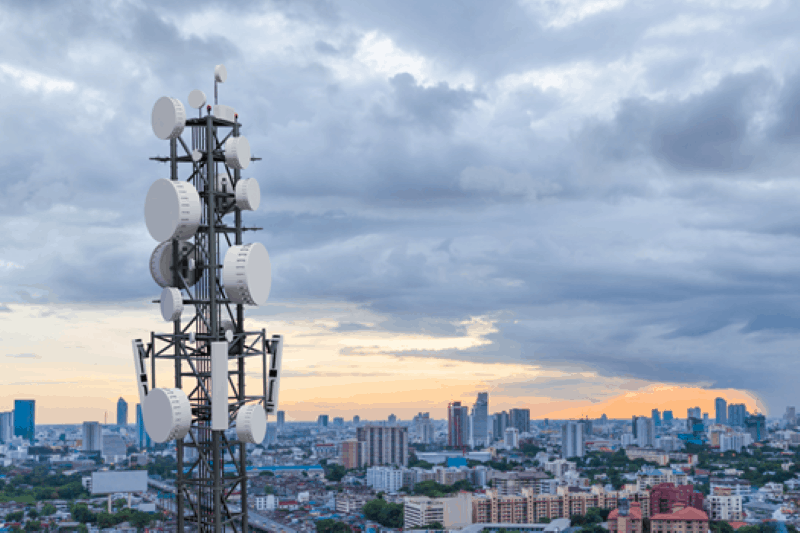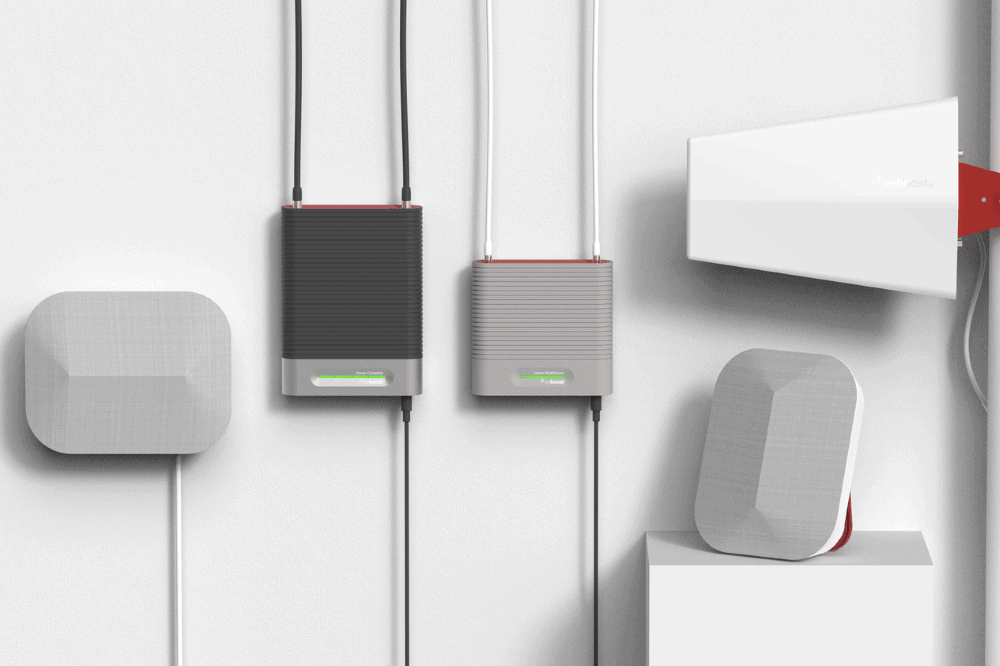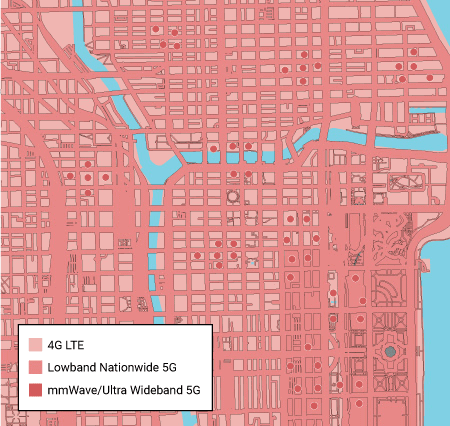Can I Get 5G at Home?
Posted on 4/28/2023 by Nicholas Jones
5G is the latest iteration of mobile network technology, and it’s taking the world by storm. It’s a hot topic of conversation for good reason. 5th generation cellular networks promise greater capacity, lower latency, improved reliability, and higher peak speeds. But how do you make sure you get 5G at home?
Although carriers have implemented mmWave 5G in select cities, it’s not widely available everywhere. Fortunately, high-band mmWaves are only part of the 5G spectrum. To meet the increasing demand for next-generation coverage, each of the major carriers started rolling out low-band, nationwide 5G.
As an exciting improvement to current 4G LTE standards, you may be wondering if you’ll soon be able to enjoy 5G at home. Here’s a closer look at 5G networks and your current options for connecting from the comfort of your house.
How does 5G work?
Like other cellular networks, 5G works by transmitting information through radio waves. Compared to previous generations, 5G uses higher frequency waves to provide fiber-like speeds over a cellular connection. Operating across a range of frequencies, carriers offer three different types of 5G experiences.
Here’s how the 5G spectrum breaks down:
Low-band 5G
Pros:
- Signals travel further and pass through more obstacles.
- Carriers are able to provide Nationwide coverage.
- Users enjoy a stronger, more reliable signal compared to 4G LTE.
Cons:
- It’s fast, but doesn’t provide the same lightning fast speeds as mmWave 5G.
Known as Nationwide 5G, low-band frequencies are more widely available across the United States. This baseline version of 5G can provide coverage to hundreds of square miles. It transmits data with a frequency that was once used for broadcasting TV signals.
Carriers are able to boost network performance through carrier aggregation, which combines multiple frequency bands and channels to allow more data to be transmitted faster. Being connected to Nationwide 5G means that you’ll enjoy better network performance compared to 4G LTE.
Mid-band 5G
Pros:
- Allows for greater capacity and performance compared to low-band.
- Signals travel further than mmWave 5G.
Cons:
- Provides smaller coverage area compared to 5G low-band.
- Offers less bandwidth and capacity compared to mmWave.
Mid-band 5G offers a performance upgrade over the low-band variety but provides less coverage. As the middle ground of the 5G spectrum, it could essentially be the sweet spot between speed and coverage as 5G infrastructure continues to develop.
High-Band 5G
Pros:
- Carries massive amounts of data with high speeds and low-latency.
Cons:
- Requires robust infrastructure and cell sites to be in close proximity.
- Provides less coverage area and struggles to penetrate buildings and other obstructions.
- Only available in select cities.
Last but not least, high-band 5G provides a revolutionary upgrade in speed, bandwidth, and capacity compared to current LTE standards. It’s the type of 5G that transmits data with mmWaves — which allows for crazy-fast speeds and lower latency. That said, mmWaves can only travel short distances and are more likely to be blocked by walls and other obstructions. High-band 5G will require new infrastructure to provide widespread network coverage.
Taken together, the 5G spectrum allows for greater versatility and incredible potential. With carrier aggregation and the continued adoption of mid-band and mmWave technology, 5G has officially arrived. As we look toward the future, we can expect to see carriers use the full spectrum of 5G bands to provide the best possible service nationwide.
All of this info is great, but you may wonder what 5G will look like in your everyday life. Is 5G infrastructure available near you? And how do you connect to 5G from home? Let’s take a closer look at 5G home internet to better understand the options.
Can 5G at home be used for internet?

Although 5G is still a work-in-progress, it’s a viable option for home internet access. There are a couple of ways you can access 5G in your home.
Mobile 5G
Surfing the web via cellular network instead of a wired internet connection is already common practice. People all over the country rely on their mobile devices to stay connected. In fact, experts predict that 72.6% of users will access the internet solely using their smartphones by 2025.
With its enhanced performance, 5G mobile networks are expected to become an increasingly popular way of connecting to the internet from home. You can connect your 5G-enabled device with the 5G network and use it as a mobile hotspot. After you’ve enabled it, you can connect several WiFi-enabled devices to your hotspot and enjoy 5G in your home.
Fixed wireless 5G
In addition to 5G mobile, major carriers provide 5G home internet through a fixed wireless connection. This option requires households to install a fixed wireless antenna in their homes in order to access 5G internet. While fixed wireless 5G provides a super fast connection, it’s only available in certain cities, and you can only use it at home.
Who offers 5G home internet?

All three major carriers offer 5G in one form or another. In addition to mobile 5G cellular networks, Verizon and T-Mobile launched 5G home internet in select areas. These systems use the existing cell phone network to provide internet access from home.
Verizon 5G Home Internet
Verizon’s 5G Home Internet is powered by Ultra Wideband — their version of mmWave 5G. On average, you can expect a download speed of 300 Mbps. Verizon’s 5G home internet plan is currently available in select parts of over 30 cities.
T-Mobile 5G Home Internet
T-Mobile launched its home internet service after several months of anticipation. Their home internet gateway combines 4G and mid-band 5G to provide average data speeds of 50 Mbps — depending on the 5G coverage in your area.
AT&T 5G Home Internet
Unlike the other two carriers, AT&T has yet to announce a 5G home internet service. It’s expected that AT&T will launch this service in specific business areas first, followed by a nationwide service soon after.
How do I know if 5G is available in my area?
5G is still in its early stages, so coverage and availability varies from city to city and carrier to carrier. With Nationwide 5G, you might already be living in a covered area and not even know it.
Luckily, there’s an easy and reliable way to check if you’re living in a supported area. You can head towards your carrier’s website and check out their coverage map. All the major carriers provide such an area coverage map on their site.
Is there a 5G signal booster?

Because 5G uses higher frequency waves, it’s harder for cell signals to go through tough building materials. As a result, signal strength suffers and you won’t be able to enjoy the full 5G experience at home. All weBoost cell signal boosters support carrier aggregation and Nationwide 5G. Whether you rely on 3G, 4G LTE, or 5G networks, weBoost home signal boosters can help you get the most out of your cellular coverage.
Shop our selection of 5G signal boosters for your home and enjoy a better 5G experience — both now and in the years to come.
Where do you need to boost your signal?
Popular Articles
Similar Articles


weBoost Keeps Customers Connected, Charged, and on the Go with the Launch of Dash
Read More


